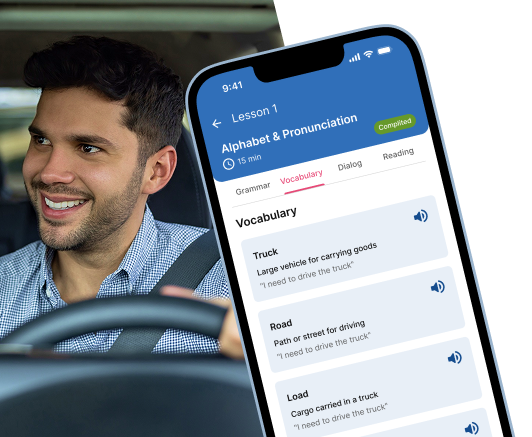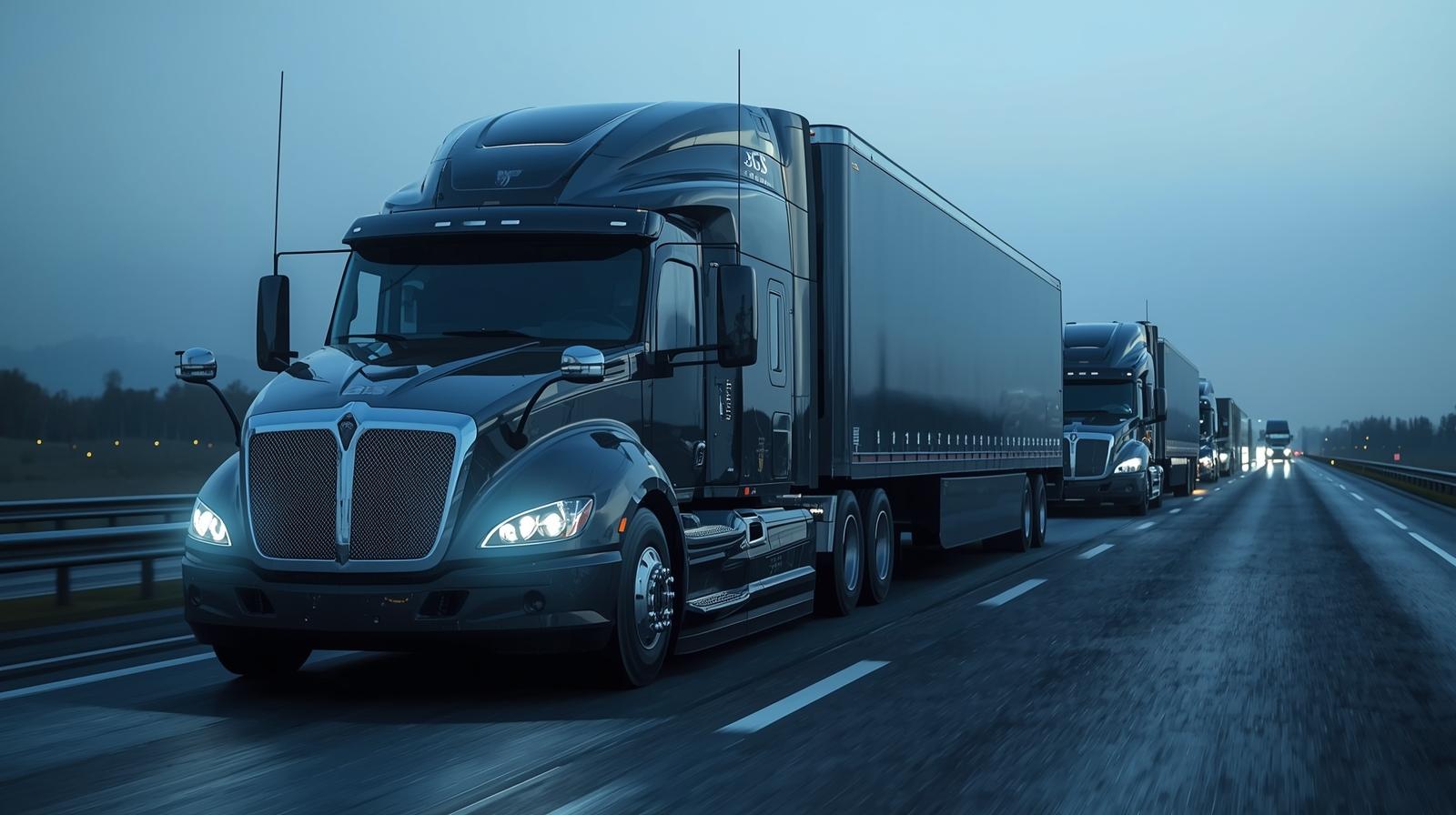If you’ve been in the trucking industry for even a minute, you’ve probably seen the acronym FMCSR somewhere — maybe on your company’s safety manual, during orientation, or at a roadside inspection.
But what does FMCSR actually mean? Let’s check out the meaning behind this term and why it matters for truckers of all kinds. You’ll learn from experts at Ezlogz who’ll explain everything in detail.
FMCSR: What the Letters Mean
FMCSR stands for Federal Motor Carrier Safety Regulations. That’s the official rulebook issued by the Federal Motor Carrier Safety Administration (FMCSA) — the federal agency responsible for overseeing commercial motor vehicle (CMV) safety in the U.S.
FMCSR may be considered as the laws and standards that govern almost every aspect of professional trucking. These include:
- Who can drive a commercial truck;
- How long you can legally drive;
- What qualifies as a safe vehicle;
- How inspections should be done;
- What records must be kept (and for how long);
- What happens when you break the rules.
If you operate a CMV interstate or run any power unit with a GVWR / GCWR of 10,001 lb or more, the FMCSR apply to you. It doesn’t matter whether you’re a national mega-carrier, an owner-operator with one truck, or a private fleet hauling your own product.
Why Should You Care
The FMCSR applies to all people involved in the trucking industry. Violations snowball quickly: fines can reach $20,000+ per count, CSA scores spike, and contracts disappear when shippers see “conditional” on your DOT record.
| Role | FMCSR Stakes |
| Driver | Tickets, out-of-service orders, CDL points, possible disqualification. |
| Fleet/Carrier | DOT audits, insurance surcharges, nuclear-verdict liability. |
| Owner-Operator | You’re on the hook for logs, inspections, drug tests—no safety department to save you. |
| Dispatcher / Safety Manager | 24 / 7 responsibility for HOS, maintenance files, accident registers. |
What’s Covered in the FMCSR?
The FMCSR isn’t just one rule — it’s a massive set of regulations divided into sections. Here are the most important ones you’ll actually deal with on the road (or in the office).
| CFR Part | What It Controls | Day-to-Day Impact |
| 382 | Drug & alcohol testing | Pre-employment, random, post-accident, return-to-duty rules |
| 383 | CDL standards | Which vehicle classes need a CDL, endorsements, medical cards |
| 391 | Driver qualifications | Hiring, medical exams, driver files, disqualification triggers |
| 392 | Driving of CMVs | Cell-phone bans, seat-belt use, roadway rules |
| 395 | Hours of Service | 11-/14-hour limits, 30-min break, 34-hour restart, ELD mandate (FMCSA) |
| 396 | Inspection, repair & maintenance | Daily DVIRs, 90-day brake inspections, maintenance records |
| 40 | Drug-testing procedures (DOT-wide) | Lab requirements, MRO review, SAP return-to-duty steps |
So yeah — it’s a lot. But it all comes down to one goal: keeping commercial drivers, freight, and the public safe. And your responsibility is to know all these rules and comply with them.
Why FMCSR Matters (Even If You’re Not a Safety Manager)
Let’s be real: no one enjoys reading regulations. But if you’re in trucking, you can’t afford to ignore them – because the consequences are serious.
Here’s why it matters to you:
- For drivers: violating FMCSR can mean points on your license, fines, or even being placed out of service;
- For fleets: non-compliance can lead to DOT audits, insurance hikes, lawsuits, and loss of contracts;
- For owner-operators: you’re responsible for everything – including your logs, inspections, and qualifications;
- For dispatchers and safety managers: it’s your job to make sure operations are FMCSR-compliant 24/7.
Bottom line? Know the rules — or risk paying for them later.
FMCSR and ELD: How They Work Together
Since the ELD mandate, Part 395 compliance is now about data integrity. The regs demand:
- Automatic capture of drive time and location;
- Tamper-resistant edits with full audit trail;
- Inspection-mode transfer to DOT within minutes;
- Real-time alerts for impending HOS violations.
An FMCSA-certified system such as Ezlogz handles those requirements out of the box, giving fleets automatic violation pop-ups, split-sleeper calculations, and single-tap roadside data transfer. It’s all aligned with current FMCSR wording.
With Ezlogz, you get:
- HOS tracking that aligns with Part 395;
- Automatic alerts for violations or drive-time limits;
- Inspection mode with fast DOT report sharing;
- Log edits and annotations with full audit trails;
- Support for yard moves, personal conveyance, and team driving.
Whether you’re on a solo run or managing a fleet, staying FMCSR-compliant shouldn’t slow you down — and with the right tools, it won’t.
What Happens If You Violate FMCSR Rules?
Short answer? It depends. Violations can lead to:
- Out-of-Service (OOS) orders park you on the shoulder until fixed;
- Civil penalties escalate fast: e.g., HOS falsification can hit $13,240 per offense;
- CSA Score damage invites more inspections and higher insurance quotes;
- Litigation exposure skyrockets; plaintiff attorneys now subpoena ELD logs and driver-qualification files after nearly every serious crash.
Worse yet — if a crash happens and your logs or records aren’t FMCSR-compliant, you (or your company) could be held liable, even if the accident wasn’t your fault. Staying compliant isn’t just about passing inspections. It’s about protecting your drivers, your equipment, and your business.
How to Stay FMCSR Compliant Without Going Crazy
You don’t need to memorize the entire FMCSR. But you should:
- Know the key rules that apply to your role;
- Use tools (like Ezlogz) that automate tracking and alerts;
- Keep your records organized — logs, inspection reports, drug test results;
- Train your team regularly, especially when rules are updated;
- Stay informed — the FMCSA updates regulations all the time;
The best fleets treat FMCSR like a checklist, not a burden. It’s just part of running a clean, professional operation.

FMCSR Isn’t the Enemy — It’s the Playbook
Sure, it’s a long acronym and a thick rulebook. But FMCSR exists for a reason: to make trucking safer, more consistent, and more professional.
If you’re behind the wheel or running a fleet, FMCSR is part of the job — whether you like it or not. But the good news? It doesn’t have to be complicated. With the right tools and a bit of awareness, staying compliant becomes second nature. And when you’re ready to make compliance easy? Ezlogs helps.
Ezlogz Keeps You FMCSR-Ready – 24/7
From ELD logs to driver qualification files and inspection reports, Ezlogz helps you manage every part of your FMCSR responsibilities – all in one place.
- FMCSA-certified ELD with automatic HOS alerts;
- DOT Inspection Mode: two taps and your logs transfer cleanly;
- Maintenance & DVIR scheduler tied to Part 396 intervals;
- Driver-Qualification File manager with renewal reminders;
- Real-time dashboards for CSA score trends and violation heat maps.
Start your free trial today at Ezlogz.com — and keep your operation running smart, safe, and 100% FMCSR compliant. Because safety isn’t a suggestion. It’s the standard!












